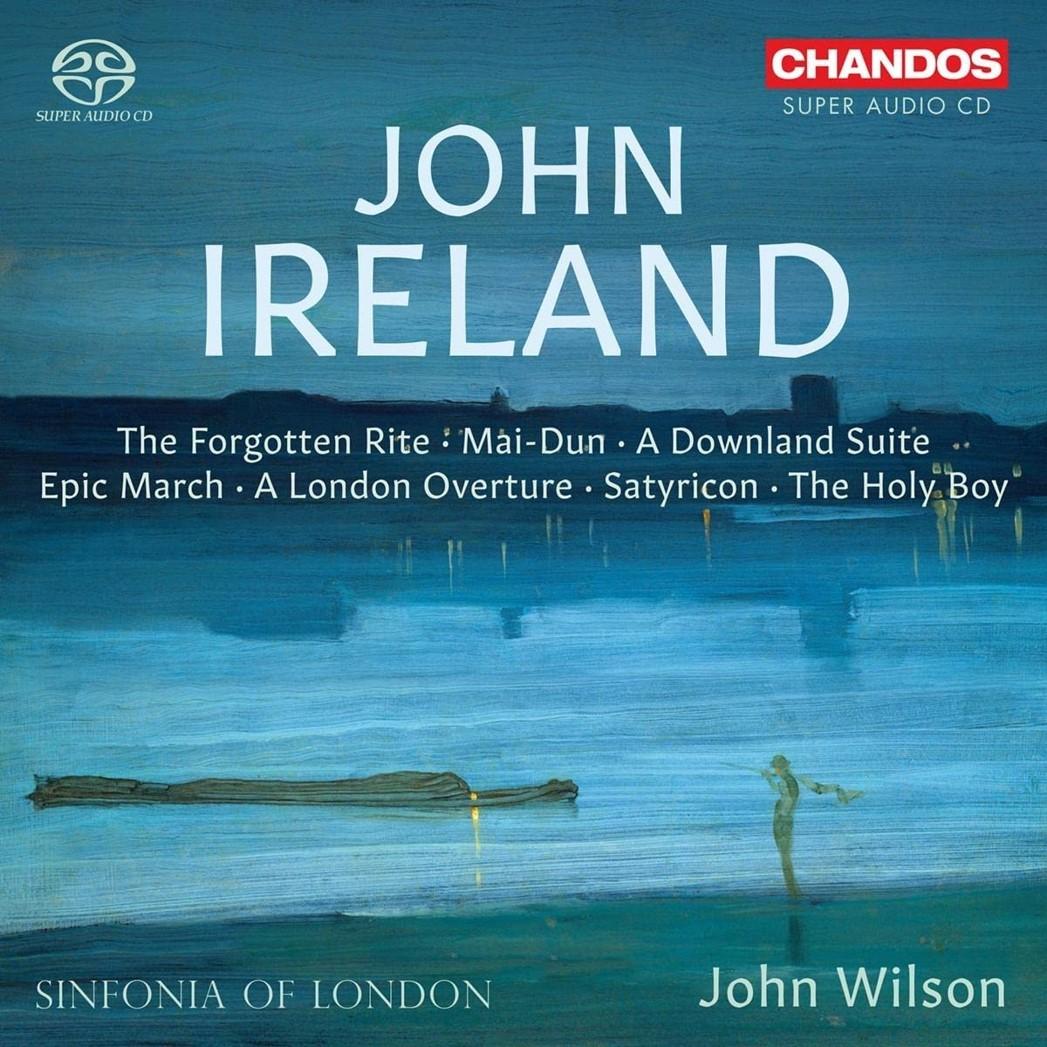 John Ireland: Orchestral Music Sinfonia of London/John Wilson (Chandos)
John Ireland: Orchestral Music Sinfonia of London/John Wilson (Chandos)
Anyone new to John Ireland’s music should start with his effervescent Piano Concerto, via the superb recording by pianist John Lenehan on Naxos. That disc is conducted by John Wilson, who returns here with his Sinfonia of London to give us this fizzing anthology of orchestral music. There are some wonderful things here. Take A Downland Suite, composed in 1932 as a brass band test piece. Ireland later arranged two of its four movements for strings, the task completed by his pupil Geoffrey Bush in 1978. The brass band original is effective, but the string version feels even more idiomatic. Wilson’s players give the “Prelude” just enough bite, and the “Elegy” plumbs incredible depths in four and a half minutes, its theme returning near the close of the last movement. A London Overture also derives from a brass band original, this 1936 revamp dedicated to the memory of Ireland’s friend Percy Bentham. The brighter, breezier passages are marvellously done here, though Wilson really excels in the work’s spookier corners. The opening is as sinister as it is witty, and there’s an exquisite horn solo eight minutes in. Think of it as a darker sequel to Elgar’s Cockaigne.
Ireland’s fondness for the esoteric is expressed in The Forgotten Rite and in Mai-Dun, inspired by physical landscapes in Guernsey and Dorset respectively. There’s a beautiful string arrangement of the lullaby "The Holy Boy", and the sparky, exuberant Satyricon overture from 1946, Wilson highlighting the sharp edges and bright colours. Ireland’s "Epic March", a morale-boosting Ministry of Information commission from the early 1940s, can’t help sounding a tad bombastic and oppressive by comparison, despite the excellence of the playing and a fruity organ contribution near the close. An enjoyable collection, sumptuously engineered and very well annotated.
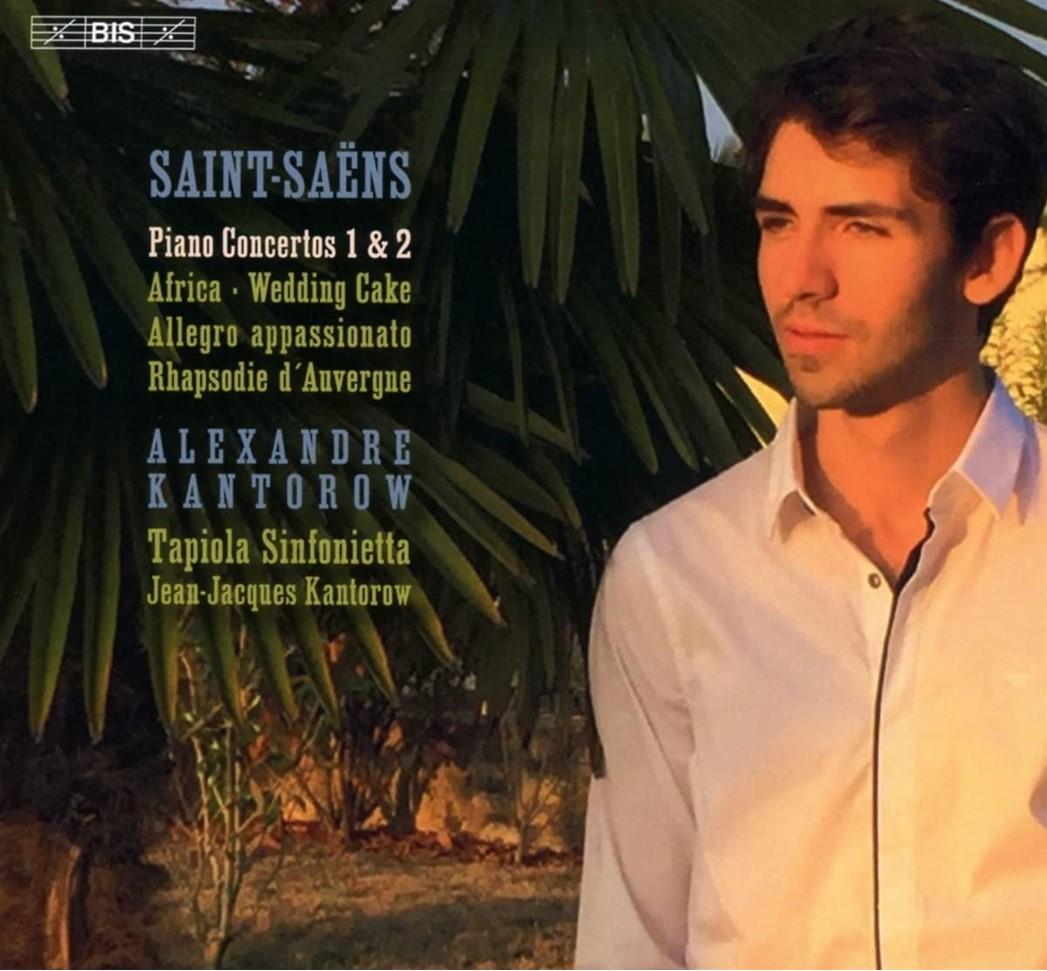 Saint-Saëns: Piano Concertos 1 & 2, Other Works Alexandre Kantorow (piano), Tapiola Sinfonietta/Jean-Jacques Kantorow (BIS)
Saint-Saëns: Piano Concertos 1 & 2, Other Works Alexandre Kantorow (piano), Tapiola Sinfonietta/Jean-Jacques Kantorow (BIS)
Increasing familiarity with the five piano concertos by Saint-Saëns hasn’t dimmed my enthusiasm for them. Why aren’t they better known? No. 2 gets an occasional airing, but that’s about it. They’re all worth hearing. Alexander Kantorow’s BIS recording of Nos. 3, 4 and 5 caused a stir when released in 2019 and this follow-up is just as good, with lean, lively orchestral playing from the chamber-sized Tapiola Sinfonietta under Kantorow’s father Jean-Jacques. The evocative sequence of horn calls which opens Concerto No. 1 is wonderfully done, Kantorow’s energy in the “Allegro assai” totally convincing. Try the slow movement’s magical opening, solo piano noodling over a very Bach-like bass line. It’s like Jacques Loussier, in a good way.
Saint-Saëns claimed to have written the follow-up in just three weeks. He wrote disparagingly about his playing at the 1868 premiere, but Liszt was impressed. Formally novel, the Concerto No. 2 begins with the cadenza and slow movement, followed by a pair of scherzos. The opening flourish is incredibly imposing here, Kantorow commendably deadpan, making the two fast movements all the more delightful. The minor key “Presto” is taken at a real lick, with every detail perfectly placed. I’ll always return to Jean-Marie Darré’s vintage 1950s set of the complete concertos, still available in decent mono sound, but Kantorow’s cycle has all the wit, drama and attention these concertos need. BIS’s engineering has plenty of impact and we get choice couplings too, including vibrant accounts of the “Wedding Cake” Valse-Caprice and Africa, the latter inspired by the composer’s trips to North Africa and quoting from what was, in 1891, the Tunisian national anthem. It’s great fun. You need this disc.
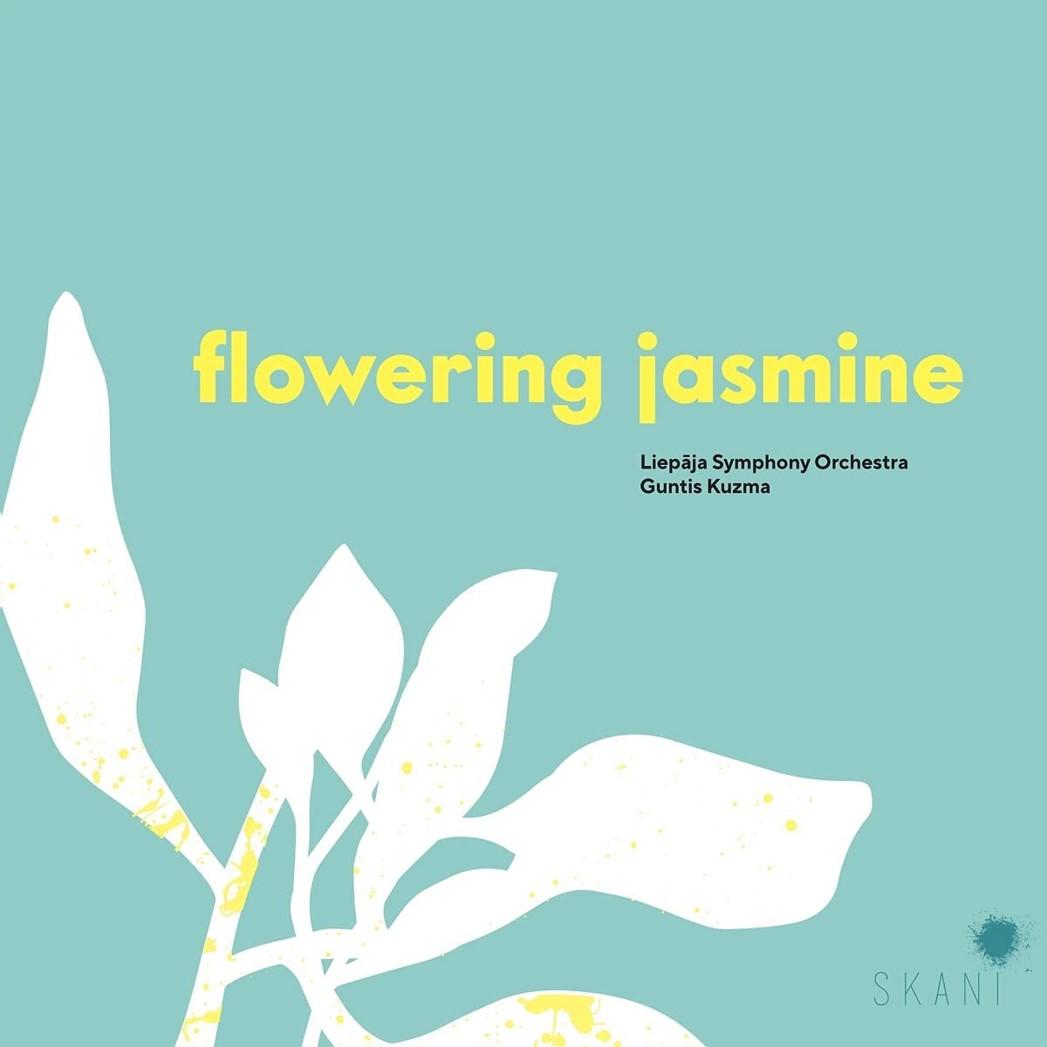 Flowering Jasmine Liepāja Symphony Orchestra/Guntis Kuzma (Skani)
Flowering Jasmine Liepāja Symphony Orchestra/Guntis Kuzma (Skani)
Here’s a century’s worth of Latvian orchestral music, from Ābele to Skulte, and 1906 to 2007. Listen blind and you’ll have a hard job placing some of these nine pieces chronologically. Conductor Guntis Kuzma explains in his foreword that “our music contains fewer modernist elements…” and the 1987 Overture by Ādolfs Skulte could have been written four decades earlier. It’s appealing, colourful stuff, though, and reading that the composer “was able to repair any household appliance” makes you like him even more. The biographical sleeve notes are as entertaining as the music. Jānis Kepītis, whose Lyrical Ballad dates, improbably, from 1984, excelled at crosswords and beekeeping. Ādolfs Ābele “seemed to glide rather than walk,” leaving behind a trail of ash and cigarette smoke. His 1924 Meditation (In Solitude) is a gem, a ripe, bittersweet eruption of colour.
Jānis Ivanovs, several of whose 21 symphonies have been released on the Skani label, is a significant figure in 20th century music. Rainbows, from 1939, is a lushly orchestrated tone poem reflecting the composer’s chromesthesia. Agriscience Engelmanis, a one-time pilot who could have been a Soviet cosmonaut, contributes an evocative, occasionally pungent Illustration in Sepia. There’s so much to love here, Kuzma drawing refined playing from an audibly enthused Liepāja Symphony Orchestra. Skani’s sound is warm and rich, and the aforementioned booklet notes include links to further information contained on the Latvian Music Information Centre’s website. Nice sleeve art too.
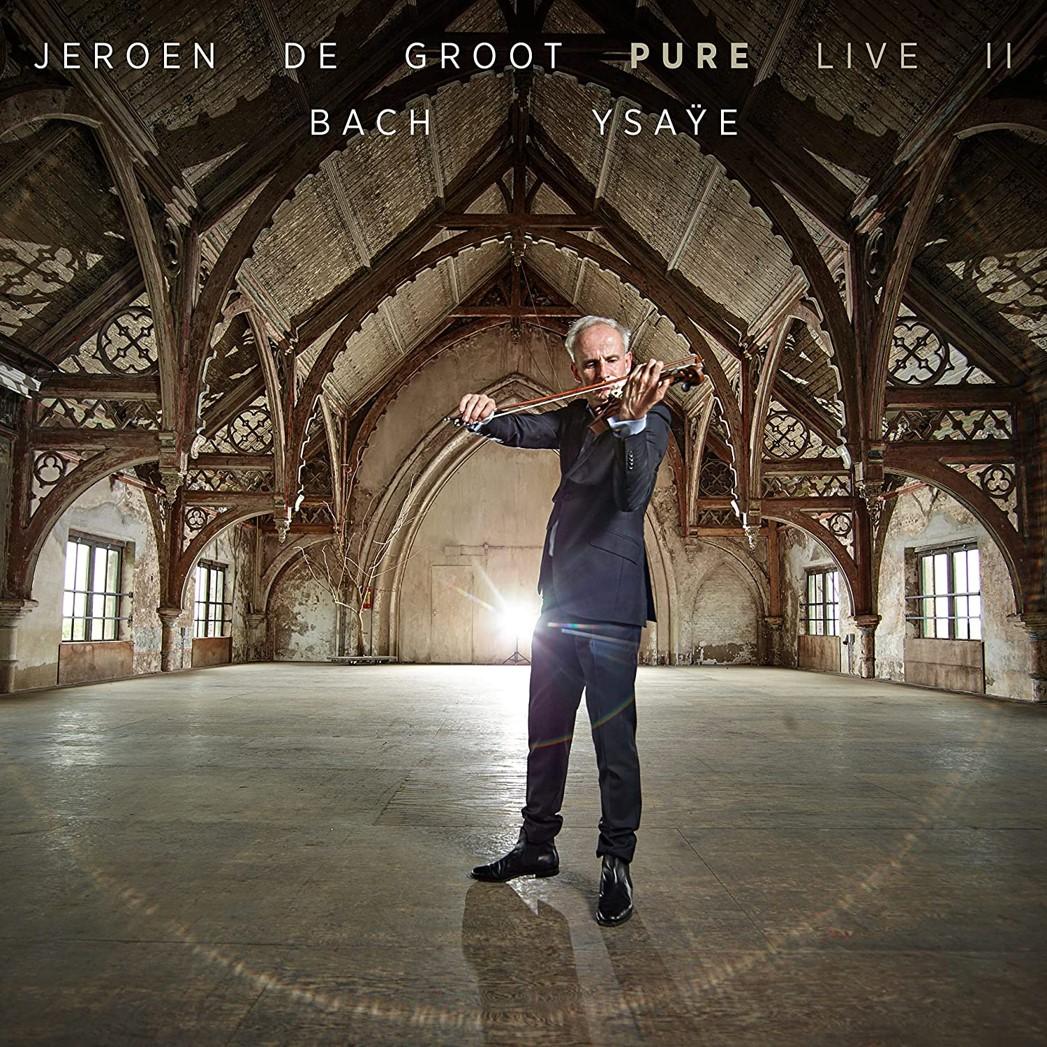 Jeroen de Groot: Pure Live II (Zefir Records)
Jeroen de Groot: Pure Live II (Zefir Records)
Dutch violinist Jeroen de Groot’s set of Bach’s solo sonatas and partitas is a keeper, the playing expressive and incisive. This new live album collects performances taped last September in Italy and Holland; we’re not told which works were played where, but the sound quality is consistent and the audience behaves itself. Hearing applause after each item feels entirely right; listen through headphones with eyes closed and it’s as if you’re in the room with de Groot. Bruce Lefriche’s ingenious transcription of Bach’s ubiquitous Toccata and fugue was made for Maxim Vengerov, the piece now transposed into A minor. Showy but effective, there’s a liveliness and exuberance absent from leaden organ versions and de Groot really keeps it moving. It’s followed by Bach’s Partita No. 1, the playing similarly lively. The “Presto” fourth movement is a fast-moving delight, de Groot then relaxing into a very lyrical “Sarabande.” There’s also the great BVW1004 Chaconne in a performance of alarming intensity. The close recorded balance is a plus, and the audience rightly erupts at the close.
A pair of fiendish single-movement Ysayë solo sonatas complete the disc, de Groot’s virtuosity always serving the music. There are moments in No. 3 when it’s difficult to believe that there’s just one person playing. No. 6’s habanera rhythms are nicely pointed and the abrupt close is superbly done.
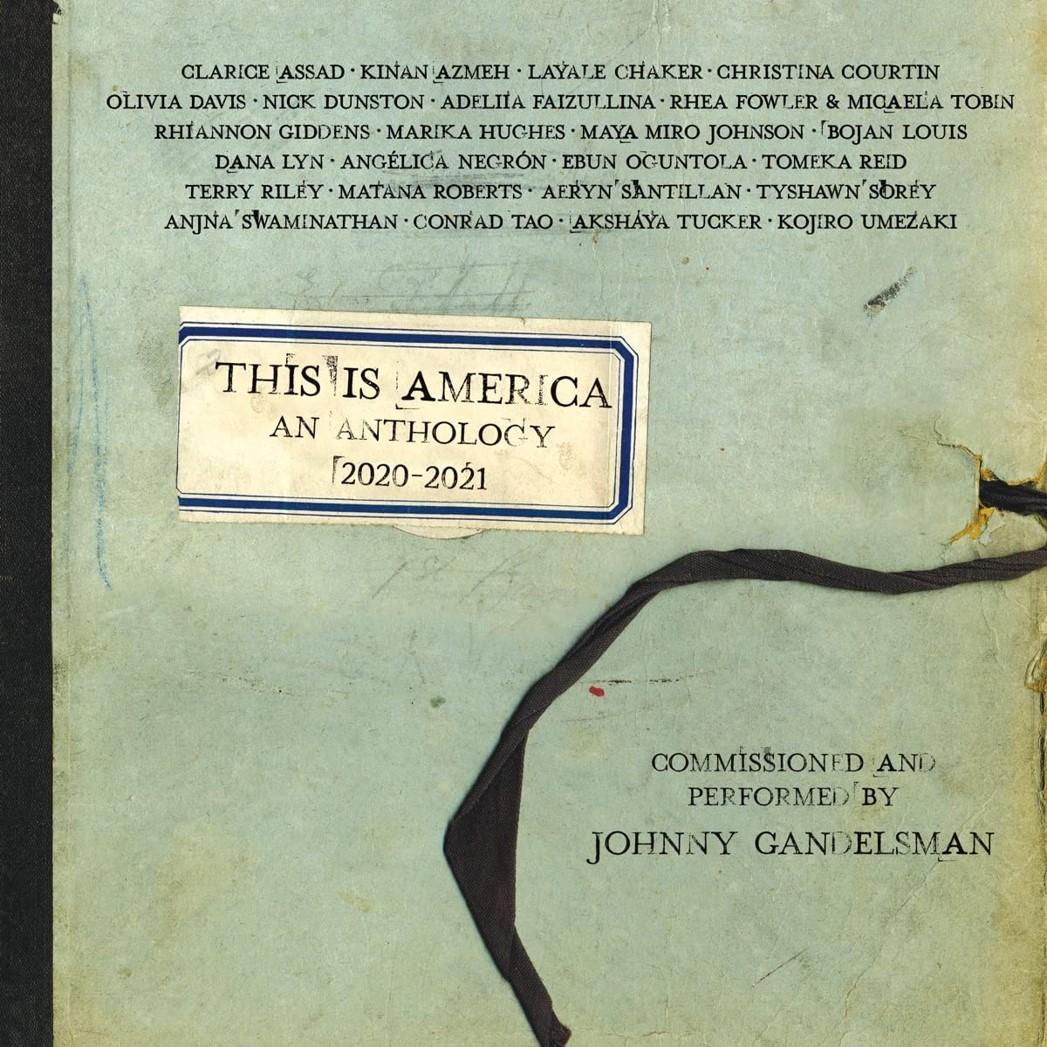 This is America: An Anthology, 2020-2021 Johnny Gandelsman (violin) (In a Circle Records)
This is America: An Anthology, 2020-2021 Johnny Gandelsman (violin) (In a Circle Records)
This is a hefty release: 22 new solo works for violin (mostly) by American and US-based composers spread over three well-filled discs. They were commissioned in 2020 by Brooklyn Rider’s Johnny Gandelsman , the brief being “to reflect in some way on the time we were all living through.” Besides Covid, the period saw the killing of George Floyd and the storming of the Capitol; you’d expect many of these new pieces to be a tad downbeat, but there’s plenty of light too, with celebrations of love, diversity and friendship. Knitting the whole project together is Gandelsman’s charismatic, big-hearted playing, giving warmth and humanity to the thorniest, most cryptic utterances. Marika Hughes’s “With Love from J” sees him singing and strumming a guitar, the affirmative lyrics celebrating a recently deceased fellow composer fond of “lovely noises about complex ideas.”
You could spend months exploring this set. Highlights include Maya Miro Johnson’s multi-movement “Dance Suite”, inspired by Israeli choreographer Ohad Naharin’s "movement language" Gaga, and “O” by Clarice Assad, Covid’s “suffocating moment” prompting Assad to ponder the nature of oxygen. Pre-recorded vocals are beautifully fused with solo violin, reminding us that “singing is the way of despair”. “Sahra Be Wyckoff” by Kinan Azmeh celebrates the period spent by its composer in Brooklyn, where he first met Gandelsman. I’ve a soft spot for Nick Dunston’s “Tardigrades”, the taps and scrapes suggesting the irrepressible energy of the titular critters, their toughness set against human fragility. Rhea Fowler and Micaela Tobin’s “A City Upon a Hill” is a response to the events of January 6 2021, including the sounds of police helicopters and protest. And then you come across a number like “New to the Session” by Rhiannon Giddens, a lilting fiddle tune recalling Giddens’ time spent as an apprentice folk musician. Terry Riley’s notes on his “Barbary Coast 1955” are superb. You’ll need a good few hours to get head and heart around this collection, but the effort is worthwhile. Gandelsman’s versatility is a constant; he owns these 22 pieces and is keen to share them.
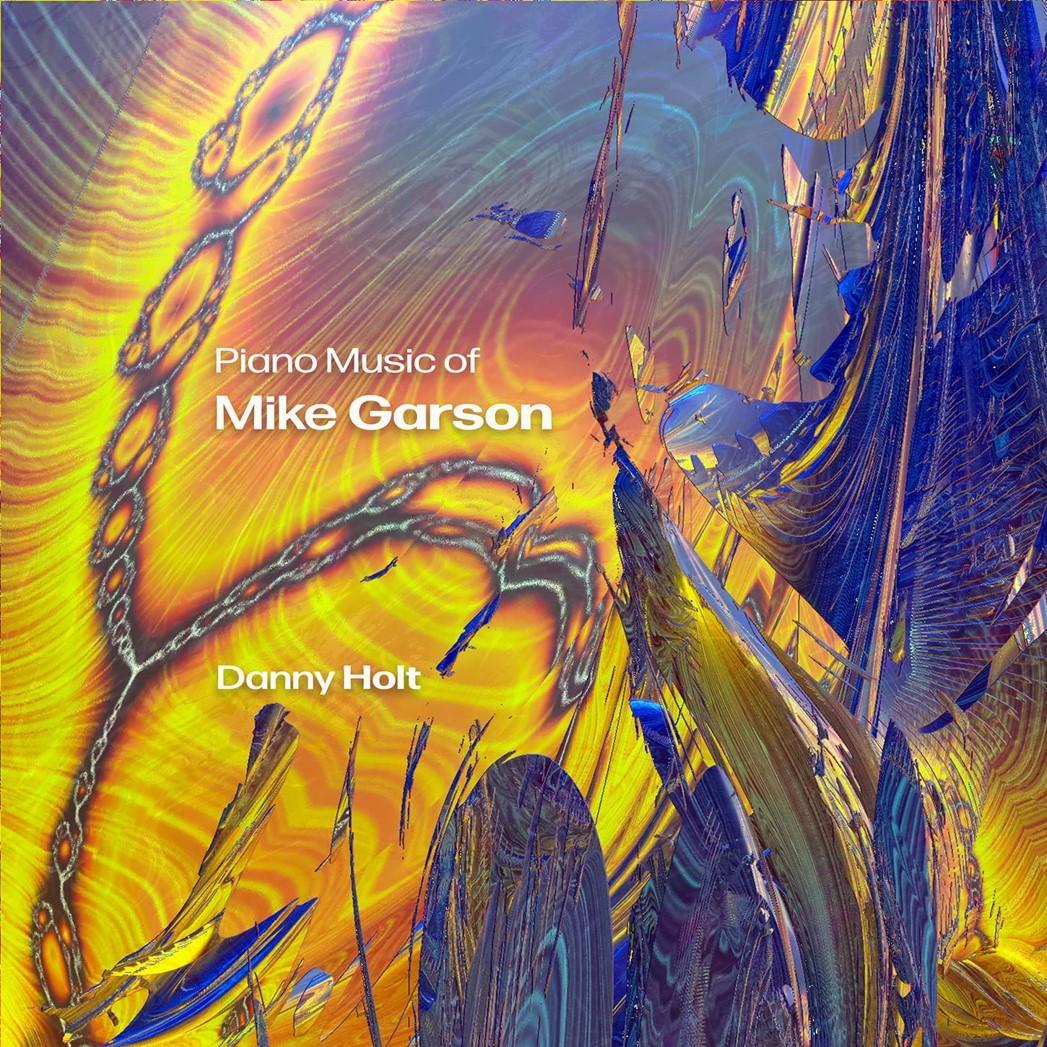 Piano Music of Mike Garson Danny Holt (Innova Recordings )
Piano Music of Mike Garson Danny Holt (Innova Recordings )
Reading pianist Danny Holt’s description of Mike Garson’s compositional processes makes for interesting reading. Best known for his long-standing musical relationship with David Bowie, Holt describes Garson as “musically all over the place”, his influences including Ligeti, Messiaen, Bach and Chick Corea. Garson is fond of the Yamaha Disklavier, used to record and then reproduce a performance with disarming accuracy. Thus, the pieces on this disc were composed in real time, most of them later notated with incredible accuracy by copyist Bruce Donnelly. Garson admits that when he wrote with pencil and paper, the results were third-rate, the Disklavier allowing him “to capitalise on a moment of inspiration”. These performances are, in a sense, recreations of recreations, and they’re thrilling, Holt always knowing just how far he can push the tempi in the faster pieces.
Garson’s “Homage to Chopin & Godowsky” is a joyous two-minute explosion of notes. “3x18” takes inspiration from Ravel’s Gaspard de la nuit. There’s a seven-minute sequence of short “Nowtudes”, Garson’s complete “quasi-etudes” comprising a set of 24 miniatures in every major and minor key. Can Holt now record the whole cycle? A charming “Nocturne in Db Major” shows that Garson can compose slow music, as does an unsettling eight-minute “Tremolando”. There’s a sweet, unassuming “Tribute to David Bowie” and an unhinged “Homage to Ligeti”. Where else might you find tributes to Ives, Prokofiev and Keith Emerson on the same disc? Holt’s virtuosity is dizzying throughout. He mentions that much of the album was recorded in 2018 on Garson’s Yamaha in his Californian home studio. A wildfire subsequently destroyed both house and piano; fortunately, the project was later completed at a CalArts just before the first Covid lockdown. A thought-provoking, entertaining release.

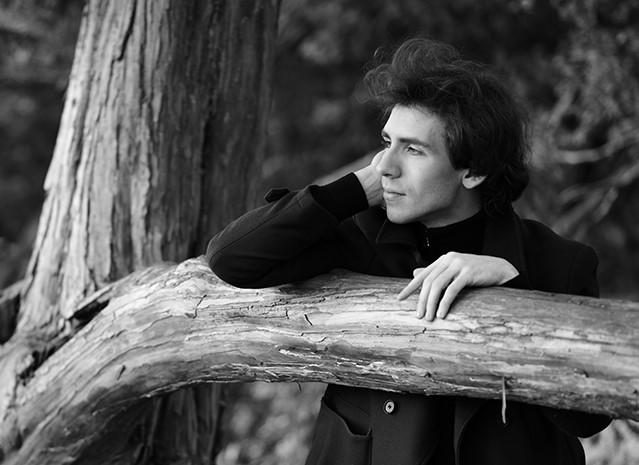












Add comment